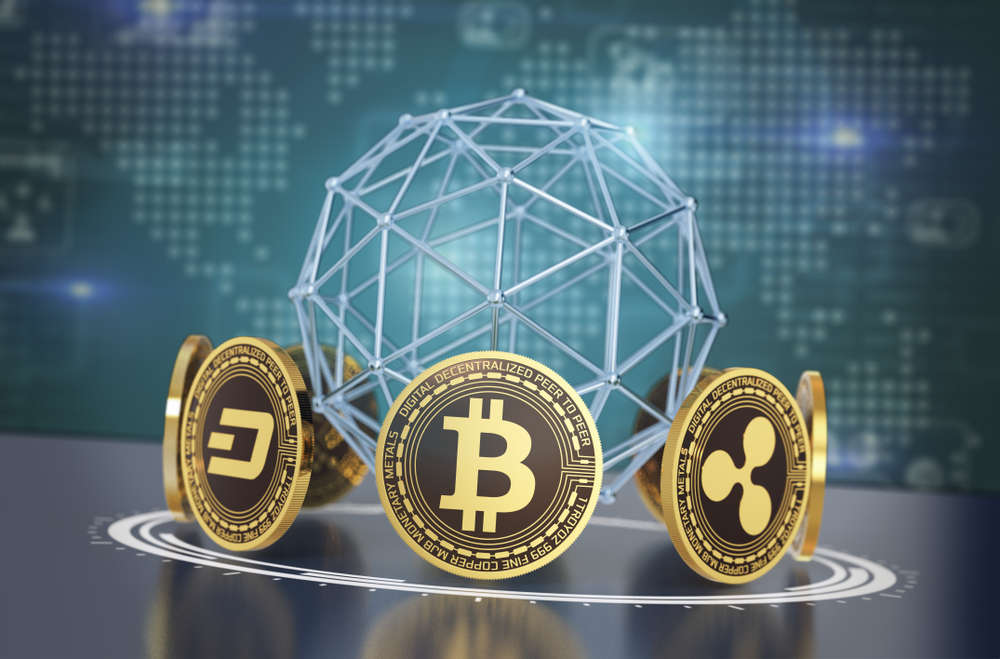
Ethereum has seen a solid performance recently, hitting a high of $252 as Ethereum 2.0 has the potential to become the most decentralised network.
By Simon Peters, Market Analyst at eToro.
It’s clear that bitcoin has been struggling to stay above $10,000, with it regularly consolidating around $9,600. I think this is temporary. The resistance level will be passed, as we have been seeing price action continue to make ‘higher lows’, suggesting upside momentum is building.
What spurred last week’s movement? In my view, it was most likely a pump and dump of bitcoin onto the market that caused the large price fluctuations last Tuesday. But this offloading and subsequent price swings highlights the importance of reducing volatility in the asset class. The need for a solution is clear, but what that solution should be, is not. Perhaps crypto exchanges can pool together to deepen liquidity, helping to prevent large traders moving the market by limiting order sizes.
Ethereum enthusiasts effuse the potential for 2.0
Ethereum was also a solid performer last week, hitting a high of $252 before retracing its steps in parallel with bitcoin’s drop on Tuesday and falling down to $233. It has since recovered somewhat and sits at $242.
Ethereum is gathering steam in the cryptoasset community as the number of wallets with 32 or more ether in them, the amount needed to operate a node, is increasing. Ethereum 2.0 will only see this momentum increase. With numerous scalability and security improvements, I would expect to see even more large-scale projects and decentralised apps, or Dapps, on the new chain. Investors are cognisant that Ethereum 2.0 will allow more companies and services to build their projects on the Ethereum network, due to the reduced cost and quicker transaction speeds.
While cryptoassets were designed to be decentralised, Ethereum 2.0 has the potential to become the most decentralised network. In addition to the aforementioned improvements, moving to proof-of-stake lowers the barrier for participation in validating transactions. Individuals will be able to be their own validator rather than having to be part of a mining pool like with proof-of-work blockchains. This means that every individual staking will be part of the security and management of the network. It is a truly decentralised network, a network that has placed power in the hands of the people.
Bitcoin and gold – an inflation hedge (sorry Goldman Sachs)
In its 2020 Commodity Report, Bloomberg analysts highlight some of the issues that bitcoin is having, and makes valuable comparisons to gold. The report states that bitcoin is an inflation hedge, in contrast to recent comments from banking giant Goldman Sachs. Similar to bitcoin, gold has recently struggled to break through the $1,750 level. Bloomberg analysts believe that both assets are behaving in a similar fashion and once they are able to break past their respective resistance levels, they can then build foundations from which to appreciate in value.
It’s encouraging to see respected voices such as Bloomberg recognise that cryptoassets, whilst volatile, do have characteristics and fundamentals that dictate the way they move.
Sentiment and investment can go hand in hand
One intriguing aspect of investing in the cryptoasset sector is the communal focus that exists, whether that be through discussions on Twitter feeds, group chats on Telegram, or even chatting to other traders on the eToro platform.
Could this ‘sentiment trading’, be a genuine development in the way we invest in the future? There are already strategies that use algorithms to track this social media sentiment. One example is The Tie, who have created a portfolio on eToro so retail investors can access this investment strategy. A quant strategy like this often remains behind the walled garden of the asset management industry. Other tools such as BotCrypto allow investors to create your own algorithmic strategies by inputting thresholds and criteria, without needing prior knowledge of coding. Because of the price volatility of the crypto sector, these strategies are able to access massive data sets, thus helping to improve the accuracy of them.
Perhaps now conversations about trading opportunities will take place on social media and chat platforms, instead of in loud offices in Bank and Canary Wharf (not that there is a problem with offices in Canary Wharf of course, after all I do work in one, or did before lockdown), or in closed chat networks.
New investment products such as sentiment-based investing, or hedge funds with quant overlays investing in cryptoassets as detailed in the PwC report we discussed a few weeks ago, could become more prolific thanks to the crypto industry.
Tradersdna is a leading digital and social media platform for traders and investors. Tradersdna offers premiere resources for trading and investing education, digital resources for personal finance, market analysis and free trading guides. More about TradersDNA Features: What Does It Take to Become an Aggressive Trader? | Everything You Need to Know About White Label Trading Software | Advantages of Automated Forex Trading












































